
views
Talking to a Child
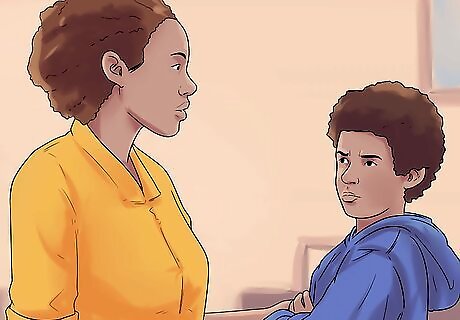
Ask them what's wrong. This is an important step if it's not obvious why the child is upset. Even if you do know, it can be useful for them to articulate their experience in their own words. Expressing themselves can help them process their emotions and develop emotional awareness. Naming and discussing their emotions will help them recognize them more clearly in the future. For young children who cannot communicate their feelings, parents can state or reflect how the child is feeling: "You look upset." "You seem frustrated." "So your feelings are hurt." The child can then respond by either affirming or denying the reflected emotions. In this way, parents are teaching the child to identify and correctly label emotions and the child is recognizing and labeling his/her emotions.
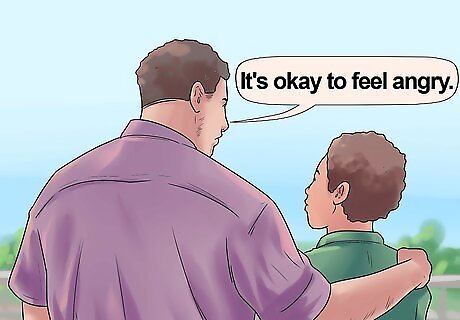
Validate their emotions. It's important to mirror the child, especially early on in their life. Acknowledging the child's emotions will help them develop a confident sense of self-esteem. For example, if your son/daughter is angry, you can say "I can see that you're angry right now. I know what it's like to feel angry. It's okay to feel angry." If they are too young to describe their experience, even just being there with them and paying attention to what they're doing can be a powerful form of mirroring.

Practice good listening. Listening to the child is one of the best ways to get them to listen to you back. It will also help them feel understood and appreciated. Follow these steps to be a good listener: Be available. Establish an open relationship where they can talk to you whenever they feel the need. This could be as simple as encouraging them when they tell you about their lives. Reflect what they say. When they tell you about how they feel, rephrase it and ask if you got it right. Avoid jumping to conclusions. If you catch the child doing something wrong, allow them to explain themselves before you respond. Ask questions about their reasoning and try to understand.

Hold your own ground. You want to acknowledge the child's feelings, but that doesn't mean that they need to rule you. It's important to be consistent and firm in response to the child's high emotions. This will give them a sense of stability and order in a sometimes-scary world.

Explain your decisions. When you set a boundary or prevent the child from doing something, it's a good practice to explain to them why you're doing what you're doing. This will set them up to model good decision making and also create a more respectful environment between the two of you. Involving them in the decision-making process is a good way to introduce them to personal responsibility and clear thinking. Make sure to tailor this to their age and to the situation at hand. Keep the "final say" in your own court, though. Authoritative parenting is generally the best approach. This kind of parenting involves some flexibility without giving away too much power.
Taking Actions to Calm the Child

Look for signs of being angry or upset. It's important to know the signs of a child who is angry or upset so you can help them connect their emotions to verbal or physical cues. Then they can recognize when they're getting upset. These can be expressed verbally or through physical actions. Here are a few to watch out for: Clenched fists Tension or holding themselves tightly Angry facial expressions Stomping Verbal outbursts such as yelling and cursing

Make sure their basic needs are met. One of the simplest fixes for an upset child is to make sure their basic needs are met. Here's a list of some basic needs that most children require: Physical needs such as not being hungry, cold, or tired. Attention. Children need attention from caregivers and people around them. Read them a book or play games together. Stimulation. Children need novel stimulation in order to thrive. New toys, friends, and activities can help them avoid emotional problems. Feeling safe and security. If your home is chaotic, they may act out because of feeling insecure.

Laugh with them. Laughter is a great way to break tension and release difficult emotions after the child has calmed down. Do something that makes the child laugh. Just make sure they don't think you're laughing at them, and also make sure it's an appropriate time to lighten the mood (not, for example, in the middle of a big argument). Here are some things you can do: Tell a joke. Watch a funny TV show or read a funny book together. Make funny faces. This is most effective with younger children.

Calm them down with physical affection. Touch is known to calm nerves, especially if it's coming from a loving, trusted source. Hugging and embracing release oxytocin in the body, which is the "bonding hormone." This hormone reduces stress levels and increases positive feelings. If a child is upset and overwhelmed, offer plenty of touch in order to help them recover and show him that you're a trustworthy source of comfort. Don't restrain the child, even accidentally. This can increase their feelings of powerlessness, and teach them that they need someone else to control their behavior.
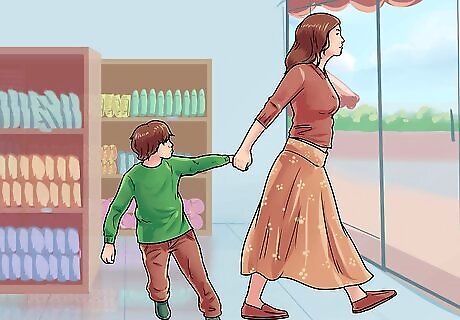
Change the environment. Stressful situations can reduce anyone to an emotional mess, adults as well as children. Sometimes the most effective approach is to remove the child from the distress. For example, if they throw a tantrum over wanting something in a store, exit the store as quickly as possible. You can deal with the behavior afterward; your first step should be to reduce the intensity of the situation, if possible. This will make it easier for everyone involved.
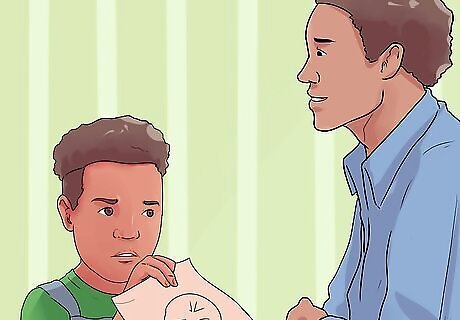
Handle physical aggression appropriately. It's not out of the ordinary for kids to use physical aggression to try and get what they want. If a child tends to act out physically, try to get them to channel their energy into other ways of expressing themselves. Reward them when they tell you what's wrong or draw an angry picture rather than becoming violent. Lashing out physically is a form of communication that some children learn can be effective. Make sure not to reinforce the behavior by giving in to their demands or allowing them to be violent without consequences. Don't forget to keep your own safety in mind. Pacify a violent child if you can. Take steps to prevent injury. If they attack if you get close, then don't get in their personal space. Wait until they are calm enough to be approached. Absolutely avoid responding with physical aggression of your own. This will teach them that it's an effective way to communicate and get what they want. Contact a therapist who specializes in treating children if physical aggression is a common event and is violent.

Be careful around triggering events. Children can be predictable in getting angry and upset. Pay specific attention to "trouble times" with the child, such as right before bed or when they need to do homework. Be extra sensitive and aware of the child's feelings in these moments. You don't need to make excuses for them, but it's helpful to be aware of these higher stress times. Prepare in advance if the child regularly has issues handling a particular behavior. Create a game-plan for how to react so that you can avoid spur of the moment decisions.
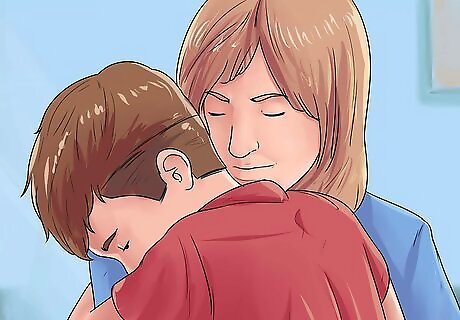
Reinforce good behavior. It's more effective to reinforce the things the child does right than to punish bad behavior. You can't always avoid punishment, but if possible, wait for your child to do something right and then encourage that behavior. Here are some ways you can reward good behavior: Use nonverbal communication. Head nods, smiles, and hugs are an effective way to reinforce behavior and better the relationship without needing to spend money. Provide extra positive attention. Be specific with verbal praise. If the child does well on a test, tell them "I'm proud of you for working hard on this test."

Teach the child ways to self-soothe. It's a great idea to show your child how to calm themselves down during moments of anger and being upset. These skills will make things easier for you and teach them to manage their emotions early, so that they are less likely to develop emotional problems later on in life. Here are some suggestions for things to teach: Apply deep pressure. This could mean asking for a back rub from a loved one, giving themselves a hand massage, wrapping themselves tightly in a blanket, or using a weighted lap pad or blanket. Offer drawing, painting, or coloring materials. This can help them focus on something other than being upset while also giving them an outlet for their emotions. Show him the same deep breathing techniques that you use. You can make it playful by exaggerating the bodily movements. Provide a calming item or favorite stuffed animal that they can touch or hug when upset. If they are scared to be away from home, you can provide a small reminder of safety that they can carry in their pocket, and they can can touch or look at when feeling sad or anxious.
Keeping Yourself Calm
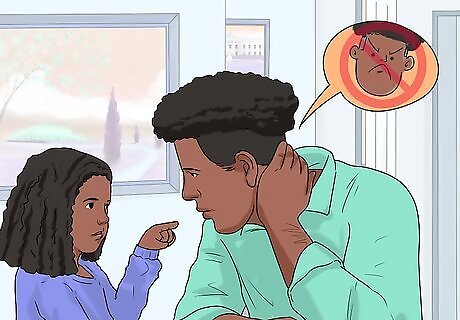
Watch your own behavior. One of the first and most important steps to calming a child is to stay calm yourself. It will be much harder to keep the child calm if you are upset. Children look to you to see how they should act. If you react strongly, so will they. Watch out for particularly harmful behaviors like yelling and screaming. This will teach the child that raising your voice is an effective way to deal with emotions and communicate with other people.

Take a deep breath. When things get hectic, don't forget to breathe. Take a step back from the chaos and inhale deeply. It may be helpful to count your breaths or focus on the sensation of the air going in and out of your nostrils. Simple actions like these can make it easier to deal with a stressful situation.

Look for the deeper reason. Children don't act out or get upset without a reason. That reason could be anything from hunger to not getting to go somewhere with friends. Understanding the why will help you keep yourself in check; you'll be able to create a plan for action for the future and feel less confused. It can be helpful to wait until the crisis is over before you start reflecting. Keep yourself present to his feelings.
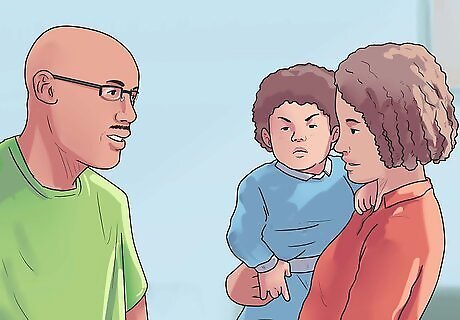
Ask for help. If you start to feel overwhelmed, or that you are losing your cool, ask your spouse or someone you trust to give you a hand. Maybe you need help making breakfast while someone else gets the kids ready. Whatever it is, don't be ashamed to reach out. Accept that help won't always be perfect. Sometimes imperfect help is better than no help. For example, if you're worried that your spouse may feed your daughter junk food, think of that as an acceptable compromise for a moment of peace.

Take time for yourself. Everyone needs a little downtime. If you feel the pressures of parenting or taking care of a child well up, try to schedule a night to yourself. Hire a baby-sitter or ask a friend to watch the kids for a few hours. Some things you can do to recharge: Go on a date. This can be with your spouse or someone new if you're single. See a movie with friends. Go to a spa. Treat yourself to some relaxation and self-care.



















Comments
0 comment